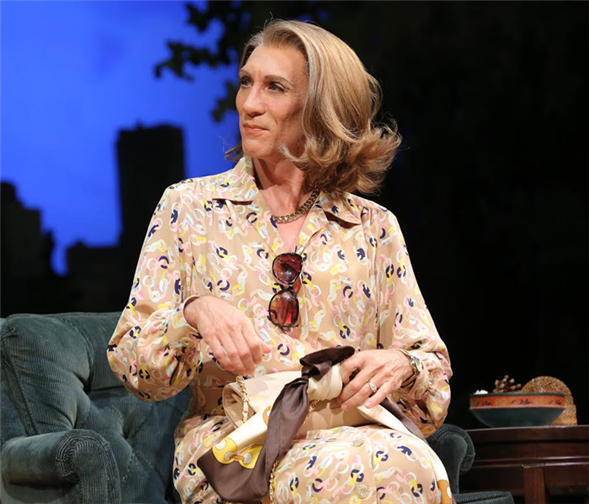Translate Page

The three main characters of Sylvia, A.R. Gurney's comedy famous for its love triangle of a Manhattan couple and their newly adopted dog, travel in a kind of pack. Trekking through conflict and crisis, they sniff out their story together, seeking a family.
But there's also a lone wolf in the house.
That's actor Robert Sella, expanding the cast of characters to six by embodying a trio of supporting players. Throughout the show, now being revived at Broadway's Cort Theatre, Sella is featured in standalone scenes with the other cast members, who include Matthew Broderick as in-crisis husband Greg, Julie White as exasperated wife Kate, and Annaleigh Ashford as the frisky title pooch.
"There's this main story going on, this love story between these three beings," Sella says. "I'm coming in to be the rest of the world -- the people outside the immediate tribe of Kate and Greg's marriage."
The actor has played many leading roles in his career – including Prior in the first national tour of Angels in America and Salieri in Amadeus for Chicago Shakespeare Theatre – and he says that creating a collection of smaller parts requires a different aspect of his craft. "Of course it's wonderful to get to play [a lead part] the whole play through," he says. "But there's something fun and challenging about having to drop into something and make it as real and clear as possible in a few pages, especially when you don't have a whole play to support you."
In Sylvia, Sella first "drops in" as garrulous Tom, a pot-bellied fellow dog owner who befriends empty-nester Greg at a Central Park dog run, dispensing advice and theories about their pet passions.
Then the actor drags out a pair of heels, a Chanel-style handbag, a smart knee-length print dress, and one of Broadway's most convincing wigs to play wealthy Upper East Sider Phyllis, an old friend of Kate's from their Vassar days. Finally, he arrives as a therapist named Leslie.
{Image1}
The designers – including costumer Ann Roth and wigmaker Luc Verschueren -- do half the job of creating his characters, Sella says. The rest is on him, and he considers rehearsal a luxury of preparation compared to the little time that he has to mindfully get into character during an actual performance.
"As soon as I go off as Tom, I'm running into a quick change," Sella explains. "It's an extensive change to become Phyllis, so anything you do to get into the mindset of the next character, you're doing as you change into them: You're thinking about it as you're physically becoming it."
To assist in the mental prep, when he's changing he can also hear what's happening on stage through the monitor, "gauging the temperature" of the lead-in scene and the audience. "You have a feeling of what you're coming into," he says.
There is precedent in Sella's career for wearing multiple hats (and dresses) and thinking on his feet. Last year he appeared in the Off-Broadway revival of the quick-change comedy The Mystery of Irma Vep. At The Public Theater he played multiple roles in David Grimm's Kit Marlowe.
"Even though I did have a great main character in Essex in Kit Marlowe, I also played all sorts of random prisoners and clerics – we were always running around changing into something," Sella recalls. "In these plays, when you only have a short scene, you've got to go bam! – it's got to be there. You need to make it clear. It's got to be definitive; you can't be vague."
In the current production, there's also the matter of calibrating the play's outrageousness. For example, Ashford's voracious Sylvia all but molests Phyllis on a couch in an explosively funny scene that has stopped the show nightly (and by all accounts did the same in the play's 1995 Off-Broadway premiere). "You have to have the courage to try the thing that will be the furthest outlier that you could ever possibly use, then you can draw it back and shape it," Sella says. "How far can we go in the fun of it while still retaining the reality of it?"
And fun is an operative word for a comedy like this one: "It's a called a 'play'!" Sella says. "You have to have a sense of play!"
---
Follow Kenneth Jones @ByKennethJones.Follow TDF at @TDFNYC.
Photos by Joan Marcus. Top photo: Robert Sella as Phyllis.
TDF MEMBERS: Log in now to see all our discounted tickets to Broadway shows.